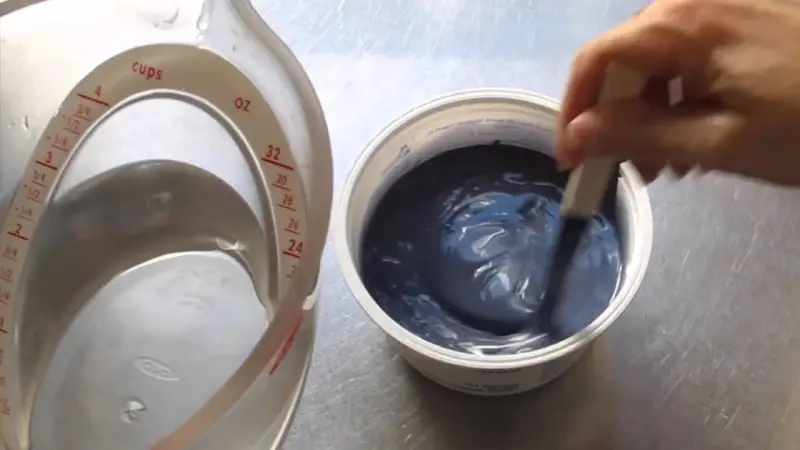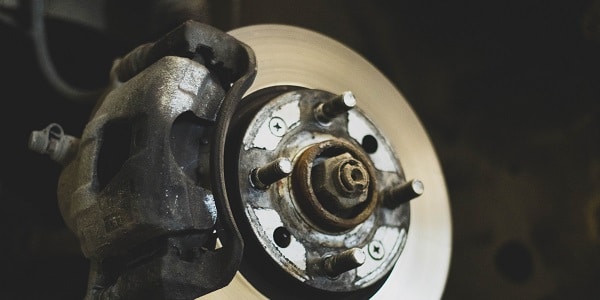Thinning out paint is a crucial step in achieving a smooth, even, and professional-looking spray painting finish. The right consistency of paint is essential for the spray gun to work correctly and avoid clogging. In this post, we will guide you through the process of thinning paint for spray painting and offer tips to achieve the best results.
When it comes to thinning paint, the first consideration is the type of paint you are using. Latex paints, for example, are thicker and need to be thinned out to a consistency that allows them to flow through the spray gun. On the other hand, oil-based paints are usually thinner and may not need much thinning. It is always a good idea to check the manufacturer’s instructions for recommendations on the proper consistency for spray painting.
The next step is to determine the right amount of thinner to add to the paint. A general rule of thumb is to add 10-15% thinner to the paint. However, this can vary depending on the type of paint, the spray gun being used, and the environmental conditions. To ensure the correct consistency, start by adding a small amount of thinner and gradually increasing it as needed. It is always better to err on the side of caution and add less thinner, as it is easier to add more than to try and remove it. Stir the paint thoroughly to ensure the thinner is fully mixed in.
How To Thin Out Paint For Spray Painting Overview
First of all, you want to make sure you have the right type of paint for your project. If you’re using latex paint, it’s usually thicker and needs to be thinned out so it can flow through the spray gun. On the other hand, oil-based paints are often thinner and might not need as much thinning. Always check the manufacturer’s instructions for recommendations on the right consistency for spray painting.
Now, let’s get into the fun part – figuring out just how much thinner to add to your paint. A good rule of thumb is to add 10-15% thinner to the paint. However, this can vary depending on the type of paint, the spray gun you’re using, and the environmental conditions. So, what do you do? Start by adding a small amount of thinner and gradually increase it as needed. It’s always better to err on the side of caution and add less thinner at first. You can always add more, but it’s harder to remove it.
Stir the paint thoroughly to make sure the thinner is fully mixed in. And that’s it! You now have the perfect consistency for spray painting. It’s really that simple! I always use high-quality thinners, like mineral spirits for oil-based paints and water for latex paints. They work great and make the whole process so much easier.
In conclusion, thinning out paint for spray painting is a crucial step in achieving a beautiful, even finish. It’s important to use the right type of paint and thinner for your project, and to follow the manufacturer’s instructions and general guidelines. With these tips, you’re sure to get amazing results every time!
How To Thin Out Paint For Spray Painting – Methods in Comparison
- Water: Water is the most common thinner for latex paint and is a great choice for thinning paint for spray painting. It’s easy to use, readily available, and doesn’t emit any fumes.
- Mineral spirits: Mineral spirits are a popular choice for thinning oil-based paint. They are effective and dry quickly, but emit fumes that can be harmful if inhaled.
- Turpentine: Turpentine is another option for thinning oil-based paint. It’s more expensive than mineral spirits and also emits fumes, but it is considered a more traditional thinner that some people prefer for historical or personal reasons.
- Paint thinner: Paint thinner is a generic term that refers to any solvent that can be used to thin out paint. It’s important to note that different brands of paint thinners may contain different solvents, so it’s best to read the label and choose one that is suitable for the type of paint being used.
- Acetone: Acetone is a strong solvent that can be used to thin out paint, but it should be used with caution. It’s flammable and can cause skin irritation, so it’s best to wear gloves and work in a well-ventilated area.
| Method | Pros | Cons |
|---|---|---|
| Water | -Readily available<br>-Non-toxic<br>-Inexpensive | -May cause the paint to dry more slowly<br>-Not suitable for oil-based paint |
| Mineral spirits | -Effective for thinning oil-based paint<br>-Dries quickly | -Emits fumes that can be harmful if inhaled |
| Turpentine | -Effective for thinning oil-based paint<br>-Considered more traditional | -Expensive<br>-Emits fumes that can be harmful if inhaled |
| Paint thinner | -Can be used with various types of paint<br>-Can be found at most hardware stores | -Different brands may contain different solvents, so it’s important to read the label |
| Acetone | -Effective for thinning paint<br>-Readily available | -Flammable<br>-Can cause skin irritation<br>-Emits fumes that can be harmful if inhaled |
In conclusion, when choosing a method to thin out paint for spray painting, it’s important to consider the type of paint being used, the desired end result, and personal preference. It’s also important to follow all safety precautions, such as wearing gloves and working in a well-ventilated area, especially when using solvents like mineral spirits, turpentine, or acetone.

Equipment for Diluting Paint For Spray Painting
| Equipment | Purpose |
|---|---|
| Paint | The paint that you want to thin out for spray painting |
| Paint thinner | The solvent used to thin out the paint, such as water, mineral spirits, turpentine, paint thinner, or acetone |
| Mixing container | A container for mixing the paint and thinner together |
| Stir stick | A stir stick for mixing the paint and thinner together |
| Measuring cup | A measuring cup for measuring out the correct amount of thinner to add to the paint |
| Spray gun | The tool used for applying the paint to the surface |
| Gloves | Gloves for protecting your hands from contact with the paint and thinner |
| Mask or respirator | A mask or respirator for protecting your lungs from fumes emitted by the paint thinner |
| Drop cloth or old newspaper | A drop cloth or old newspaper for protecting the surrounding area from drips and spills |
It’s important to have all of this equipment on hand before beginning the process of thinning out paint for spray painting. Having everything you need ready and within reach will make the process smoother and more enjoyable. And remember, always follow safety precautions and wear gloves and a mask or respirator when working with solvents like mineral spirits, turpentine, or acetone.
Step By Step Instruction On How To Thin Out Paint For Spray Painting
- Gather all necessary equipment. This includes the paint, paint thinner, a mixing container, a stir stick, a measuring cup, a spray gun, gloves, a mask or respirator, and a drop cloth or old newspaper.
- Determine the right amount of paint thinner to add to the paint. As a general rule, start by adding 10-15% thinner to the paint, and gradually add more if needed. The right consistency will depend on the type of paint and the spray gun being used.
- Pour the paint into the mixing container.
- Use the measuring cup to add the right amount of thinner to the paint.
- Use the stir stick to mix the paint and thinner together thoroughly.
- Test the consistency of the paint. Pour a small amount of the thinned paint into the mixing container and observe how it flows. If it’s too thick, add more thinner and stir again. If it’s too thin, add more paint. Repeat until you achieve the desired consistency.
- Put on your gloves and mask or respirator.
- Place the drop cloth or old newspaper around the work area to protect it from drips and spills.
- Fill the spray gun with the thinned paint.
- Test the spray gun on a scrap piece of cardboard or another surface to make sure the paint is flowing correctly and the pressure is set correctly.
- Begin spray painting. Hold the spray gun about 6-8 inches away from the surface and make overlapping passes, moving the spray gun in a side-to-side motion.
- Clean the spray gun, measuring cup, stir stick, and mixing container thoroughly.
And that’s it! By following these steps, you’ll be able to thin out paint for spray painting in no time. Remember to always wear gloves and a mask or respirator when working with solvents like mineral spirits, turpentine, or acetone, and follow all safety precautions. Happy spray painting!

F.A.Q.
What type of paint thinner should I use?
It depends on the type of paint you’re using. For oil-based paints, use mineral spirits, turpentine, or paint thinner. For water-based paints, use water. If you’re unsure, check the label on the paint can or consult a professional.
How much thinner should I add to the paint?
As a general rule, start by adding 10-15% thinner to the paint. The right consistency will depend on the type of paint and the spray gun being used. Gradually add more thinner if needed until you achieve the desired consistency.
Can I use water to thin out water-based paint?
Yes, water can be used to thin out water-based paint.
Can I use acetone to thin out paint?
Acetone can be used to thin out some types of paint, but it is not recommended for use with water-based paints. It is best to check the label on the paint can or consult a professional to determine the best solvent to use.
What is the right consistency for paint when using a spray gun?
The right consistency for paint when using a spray gun is when the paint flows smoothly without leaving drips or runs. It should be thin enough to flow through the spray gun easily, but not so thin that it drips or runs.
How far should I hold the spray gun from the surface?
Hold the spray gun about 6-8 inches away from the surface when spray painting.
What should I do if the paint is too thick for the spray gun?
If the paint is too thick, add more thinner and stir the mixture again. Repeat until you achieve the desired consistency.
How do I clean the spray gun after use?
After use, clean the spray gun thoroughly with solvent and a brush. Follow the manufacturer’s instructions for cleaning the spray gun.



Leave a Reply